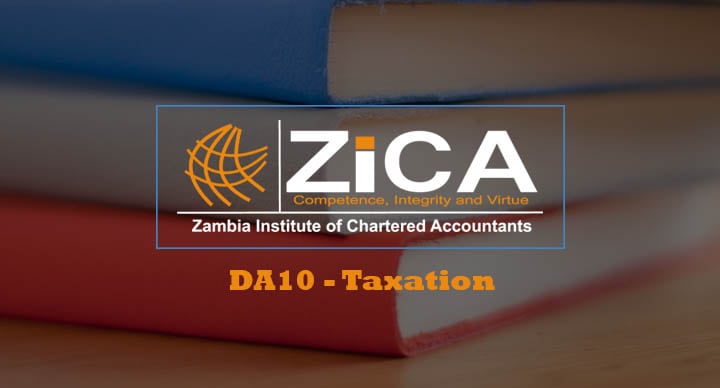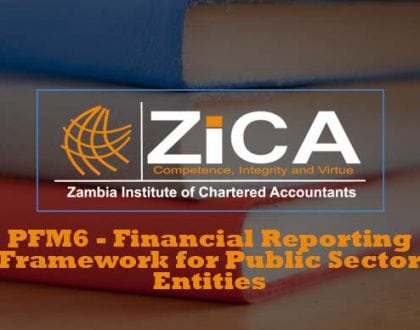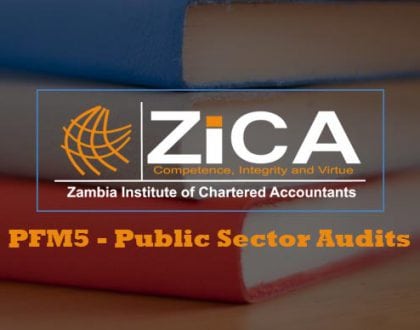DA10-Taxation
No access plans exist.

Course Features
Course Details
DA10- Taxation
Learning Outcomes On successful completion of D10, students should be able to:- Describe the principles of taxation and explain the role played by taxation in the economy
- Identify and respond appropriately to ethical issues arising in the course of performing tax work
- Explain the administrative procedures for direct taxes, including objections and appeals procedure
- Calculate taxable income for unincorporated businesses and compute income tax payable there on
- Calculate Income Tax payable on emoluments from employment and advise on how it is paid under the Pay As You Earn system
- Calculate taxable income and withholding tax on all investment income.
- Calculate company income tax payable and explain how it is payable
- Calculate taxable profits from farming and compute income tax payable on farming and fishing income
- Explain the treatment of transfers of value and calculate Property Transfer Tax payable
- Calculate presumptive taxes payable
- Calculate and account for Value Added Tax on all types of supplies
- Calculate Customs and Excise duties and advise on the clearing procedure for motor vehicles
| Topic | Weighting |
| Role and purpose of taxation | 5% |
| Ethical issues in Tax Practice | 5% |
| Administration of direct taxes | 10% |
| Taxation of unincorporated businesses | 15% |
| Taxation of income from employment | 10% |
| Taxation of investment income and Aggregation of incomes received by individuals | 5% |
| Company income taxation | 15% |
| Taxation of farming enterprises | 10% |
| Property Transfer Tax | 5% |
| Presumptive Tax | 5% |
| Value Added Tax (VAT) | 10% |
| Customs and Excise | 5% |
Content
-
Role and Purpose of Taxation
- The Zambian system of taxation
- Explain the scope and purpose of taxation
- Explain the functions of taxation in an economy
- Identify other sources of revenue for Central Government apart from taxation
- Identify the main taxes found in Zambia
- History of taxation in Zambia
- Explain the History of taxation in Zambia
- Qualities of a good tax system
- Describe the qualities of a good tax system
- Classification of taxes
- Explain the main classification of taxes
- Sources of Tax Law in Zambia
- Explain the structure of tax legislation and the role of case law in Taxation
- Charge year
- Explain the charge year and its relevance in taxation
- Taxable and exempt income and gains
- Describe the categories of taxable and exempt income in broad terms
- Taxable and exempt persons
- Describe the categories of taxable and exempt persons in broad terms
- Residence, ordinary residence and domicile and their implications for taxation
- Explain the meaning of the terms: residence, ordinary residence and domicile as they relate to individuals and persons other than individuals.
- The Zambian system of taxation
-
Ethical issues in Tax Practice
- IFAC Ethical code guidance for professional accountants providing taxation services (M)
- Explain and apply the IFAC Ethical code guidance for professional accountants providing taxation services
- Explain how the fundamental principles of integrity, objectivity, confidentiality, professional competence and due care and professional behaviour apply when providing taxation services.
- Tax avoidance and Tax Evasion
- Explain the nature and differences between tax avoidance and tax evasion
- IFAC Ethical code guidance for professional accountants providing taxation services (M)
-
Administration of Taxes
- The role of the Ministry of Finance and the Zambia Revenue Authority
- Explain the roles of the Ministry of Finance and the Zambia Revenue
- Describe the structure of the Zambia Revenue Authority and explain the main functions of each of the operating divisions of the Zambia Revenue Authority
- Payment of Income Tax by individuals and incorporated businesses (M)
- Explain the various methods which are used to collect income tax
- Explain the meaning of the independent taxation system which applies in Zambia
- Explain the taxpayers requirements to obtain a TPIN
- Explain the procedures for submission of returns and payment of tax
- Explain the consequences of late submission of returns and late payment of tax
- Calculate the interest on overdue tax and the related penalties.
- Payment of withholding taxes, Turnover Tax, and Property Transfer Tax
- State the due dates for the payment of withholding taxes, turnover taxes and property transfer tax
- Objections and appeals procedure
- Explain the objections and appeal procedures
- Role, functions and composition of the Tax Appeals Tribunal
- Explain the role and functions of the Tax Appeals tribunal
- Explain the composition of the Tax Appeals tribunal
- The role of the Ministry of Finance and the Zambia Revenue Authority
-
Taxation of Unincorporated Businesses
- Trades, professions and vocations and badges of trade
- Define the term business in the context of taxation
- Explain the similarities and differences between trades, professions and vocations
- Explain the badges of trade
- Computing taxable business profits for individual sole traders assessed under self-assessment (M).
- Calculate taxable business profits for individual sole traders
- State the income tax rates applicable to individuals
- Calculate income tax for sole traders
- Explain tax treatment of tax losses for sole traders
- Capital allowances on implements, plant and machinery, industrial buildings and commercial buildings. (M)
- Describe the various assets and expenditure on which capital allowances are available
- Describe the types of capital allowances available on implements, plant and machinery, industrial buildings and commercial buildings
- Calculate capital allowances on implements, plant and machinery, industrial buildings and commercial buildings
- Calculate balancing allowances and charges on the disposal of implements plant and machinery, industry buildings and commercial buildings
- Computing taxable profits for partnerships and allocation to individual partners (M)
- Explain the meaning of the term partnership
- Explain how the taxable profits of a partnership are calculated.
- Calculate the taxable profits of a partnership
- Divide the partnerships between partners according to their partnership agreement, including the situation where there is a change of partnership agreement
- Divide the partnership losses between the partners and explain the tax treatment tax losses for partners.
- Calculate the income tax payable by the partners.
- Accounting dates and basis of assessment, including rules applicable on commencement, cessation and change of accounting date (M).
- Explain what is meant by a basis period
- Explain the meaning of the Current Year basis of Assessment and preceding year basis of Assessment.
- Explain the circumstances under which the Current Year basis of Assessment and the preceding year basis of Assessment apply.
- Explain the rules that apply in determining the basis of assessment on commencement, cessation and change of accounting dates
- Prepare income tax assessments involving commencement, cessation and change of accounting dates.
- Trades, professions and vocations and badges of trade
-
Taxation of Income from Employment
- A Emoluments, employment and office
- Define and explain the meaning of the term emoluments
- Explain and distinguish between an office and employment
- Employment compared with self-employment
- Describe the tests that are used by the courts and the revenue Authority to distinguish an employee and a self-employed person
- Basis of assessment for emoluments
- Explain the basis of assessment for emoluments from employment
- Taxable and exempt emoluments (M)
- Explain the tax treatment of various payments made to employees
- Calculate the taxable or exempt amounts within those payments
- Taxation of benefits in kind
- Explain the treatment of taxation of benefits in kind
- Taxation of payments made on termination of employment (M)
- Calculate income tax on the payments made on termination of employment
- Allowable expenses
- Describe the rules used for identifying allowable expenses from employment income
- Operation of the Pay As You Earn system
- Explain the operation of the Pay As You Earn System
- Discuss its advantages and disadvantages
- Explain the consequences of not complying with PAYE regulations
- Comprehensive computation of income tax payable on employment income (M)
- Calculate then total income tax payable by an employee on the total employment income received during the tax year.
- A Emoluments, employment and office
-
Taxation of Investment income and Aggregation of incomes received by individuals
- Types of investments for individuals
- State the different sources of investment income for individuals
- The withholding tax system
- Explain the operation of the system of withholding tax
- Identify the types of investment income in respect of which withholding tax is the final tax and those types of investment income in respect of which withholding of tax is not the final tax
- Explain the treatment of investment income that is subject to withholding tax which is final when computing the tax liabilities of individuals
- Explain the treatment of investment income that is subject to final withholding tax which is not final, when computing the tax liabilities of individuals
- Treatment of income from savings and financial investments
- Explain the treatment of income from savings and financial investments
- Treatment of dividends received from Zambian companies
- Explain the treatment of dividends received from Zambian companies
- Comprehensive computation of Income Tax payable by Individuals (M)
- Aggregate an individual’s income from different sources and compute the total taxable income
- Calculate the income tax payable on aggregated taxable income.
- Types of investments for individuals
-
Company Income Taxation
- Residence of a company for Income Tax purposes
- Explain the meaning of residence for company income tax purposes
- Zambian Sources of Taxable income for companies
- Identify the Zambian sources of taxable income for companies
- Taxation of business profits for companies (M)
- Explain how taxable business profits are computed
- Identify allowable and non-allowable expenses for the purposes of calculating taxable business profits
- Apply the rules relating to personal to holder motor cars provided by employers for employees use.
- Apply the rules relating to the provision of free residential accommodation employers for employees
- Calculate capital allowances relating to companies
- Explain the similarities and differences between the calculation of capital for companies and individual sole traders.
- Taxation of investment income received by companies (M)
- Calculate company income tax for a company that has received investment income
- Computing Company Income Tax payable and its payment (M)
- Explain the tax incentives available to companies that list their shares on the Lusaka Stock Exchange in the year of listing.
- Explain the tax incentives available to companies that issue one third or more of their shares to indigenous Zambians.
- State the income tax rates applicable to companies
- Calculate company income tax payable using the appropriate company income tax rates
- Relief for tax losses incurred by companies (M)
- Explain how losses can be set against future taxable income
- Residence of a company for Income Tax purposes
-
Taxation of farming enterprises
- Characteristics of farming and fishing enterprises
- Describe the characteristics of farming and fishing enterprises
- Computing farming profits for individuals and companies (M)
- Calculate tax adjusted farming profits for both incorporated and unincorporated farming and agro processing enterprises
- Calculate the income tax payable by incorporated and unincorporated businesses farming and agro processing enterprises
- Calculate the income tax payable by incorporated and unincorporated businesses farming and agro processing enterprises generating both farming and non-farming income
- Capital allowances for farming enterprises (M)
- Identify qualifying capital expenditure and calculate capital allowances
- Relief for losses from farming and fishing businesses (M)
- Explain how losses can be set against future taxable income
- Averaging of farming and fishing income (M)
- Describe the circumstances under which farming and fishing income may be averaged, and calculate average farming and fishing income
- Valuation of livestock (M)
- Explain how the valuation of livestock is treated
- Characteristics of farming and fishing enterprises
-
Property Transfer Tax
- A Meaning of transfer and realised value
- Explain the scope of property transfer tax
- Transfers within groups of companies
- Explain the transfer within groups of companies
- Transfers to members of the immediate family
- Explain the concept of realised value
- Explain how transfers to members of the immediate family are treated.
- Computation of property transfer tax and its payment (M)
- Calculate the amount of property transfer tax payable and determine when it is due for payment
- Identify the documents required in respect with property transfer transactions
- Explain the objections and appeal procedures in relation to property transfer tax
- A Meaning of transfer and realised value
-
Presumptive Taxes A Presumptive taxes (I)
- Explain the meaning of presumptive tax
- Explain types of presumptive taxes
- Turnover tax
- Identify persons liable to turnover tax
- Calculate turnover tax and explain the procedure for its payment.
- Explain the procedures for dealing with capital allowances and trading losses for businesses that are liable to turnover tax and calculate tax where such businesses later qualify to be assessed under self-assessment.
- Explain the meaning of presumptive tax
-
Value Added Tax (VAT)
- Taxable and exempt supplies for VAT purposes (M)
- Explain the scope of Value Added Tax
- Identify the various types of supplies and distinguish between taxable supplies and exempt supplies
- Registration and deregistration (M)
- Explain the registration and deregistration procedures for the purpose of Value Added Tax
- The tax invoice, tax point and tax period
- Explain the role of the tax invoice in the Value Added tax administration
- Explain the meaning of the tax point and its importance in the Value Added Tax accounting procedure
- Identify the tax point for various transactions
- Recovery of input VAT, pre-registration input VAT and partial exemption (M)
- Explain the circumstances under which input tax may be recovered and those under which it cannot be recovered.
- Calculate the amount of Output and Input VAT on business transactions and compute the VAT payable by or refundable to a business
- Bad debt relief (M)
- Explain how bad debt relief is claimed
- Calculate the amount of bad debt relief
- Special schemes (M)
- Explain the special scheme related to VAT (cash accounting & extended period)
- VAT inspection/control visits, payment of VAT, submission of VAT returns, penalties and appeals for review (M)
- Explain when Value Added Tax is payable and the consequences of late payment
- Reverse tax
- Explain how to account for reverse tax
- Taxable and exempt supplies for VAT purposes (M)
-
Customs and Excise
- Introduction to tariffs and computation of Customs Values (VDP), customs duty and excise duty
- Explain the role of the customer services of the Zambia Revenue Authority concerning imports and exports
- Importation and clearance of motor vehicles (M)
- Calculate customs duty, excise duty and import VAT on imported motor vehicles
- Valuation principles applicable on imports
- Explain the valuation principles
- Exports and export concessions
- Explain the exports concessions available under tax legislation
- Rules of origin and tax implications
- Explain the rules of origin and tax implications
- Trade agreements and their benefits to the economy
- Explain the trade agreements and their benefits to the economy
- Payment of Customs and Excise duties (M)
- Calculate the amount of Customs and Excise duties
- Introduction to tariffs and computation of Customs Values (VDP), customs duty and excise duty
| Section | Marks |
| Section A: 2 compulsory questions 25 marks each | 50 |
| Section B: Any 2 out of 3 questions, 25 marks each | 50 |
| TOTAL | 100 |
Recommended reading
- ZiCA D10 Taxation Study Manual
- Hassan, Mohammed Mulenga, Taxation in Zambia, ZICA
This course does not have any sections.





